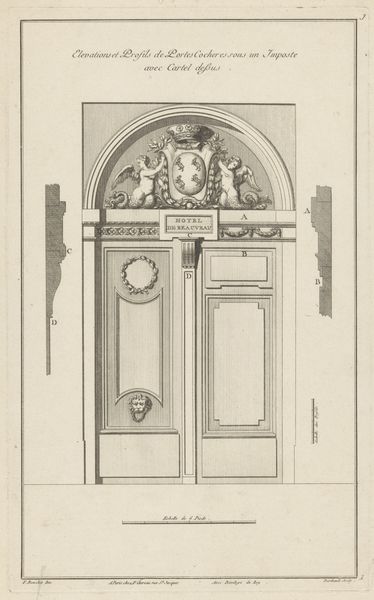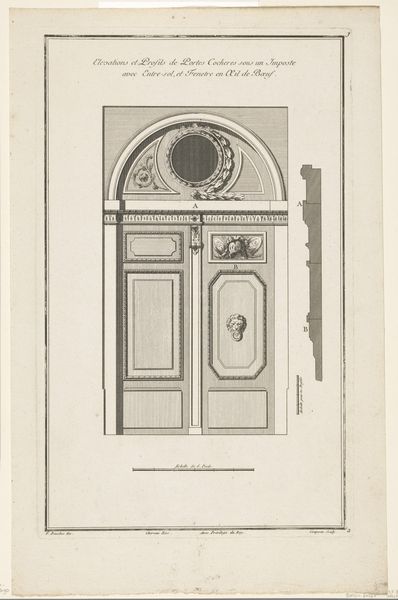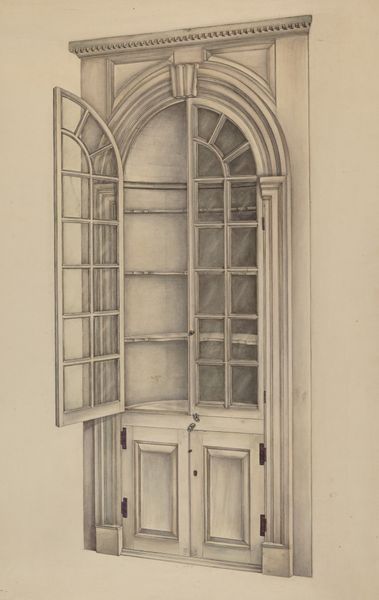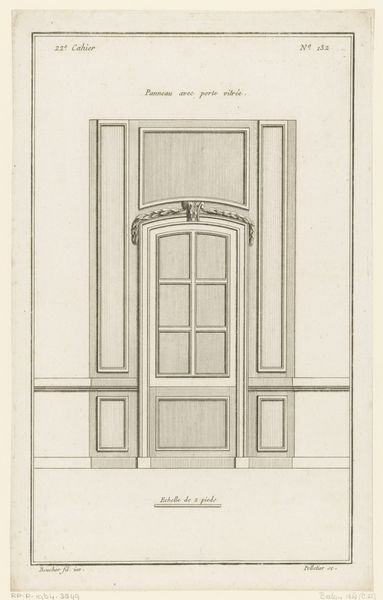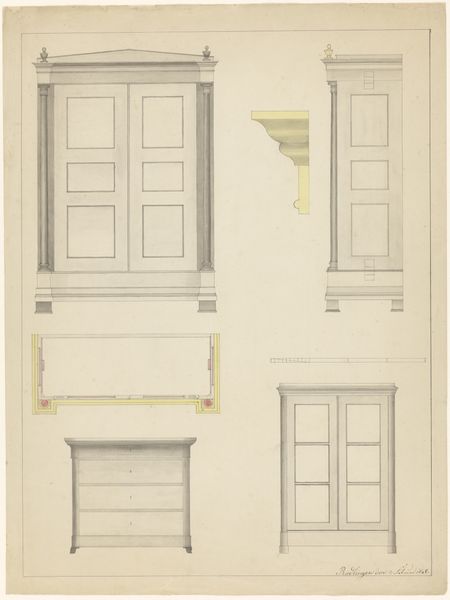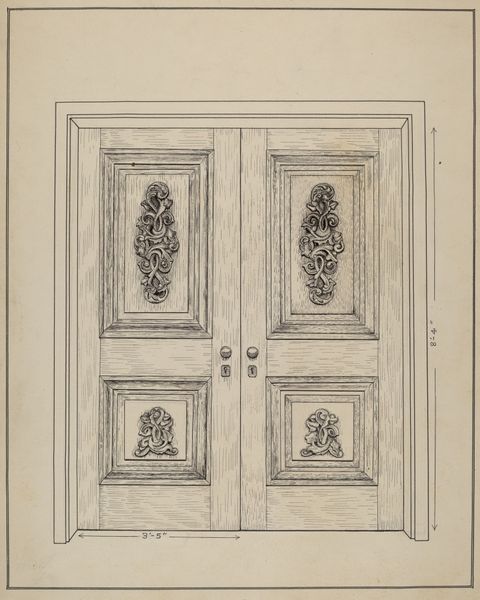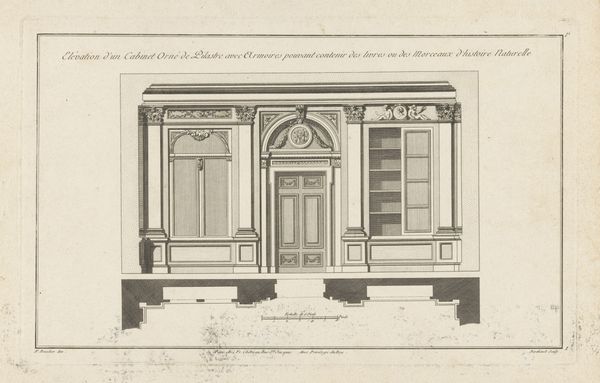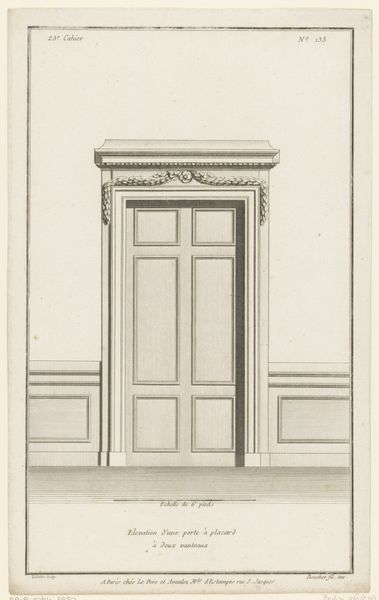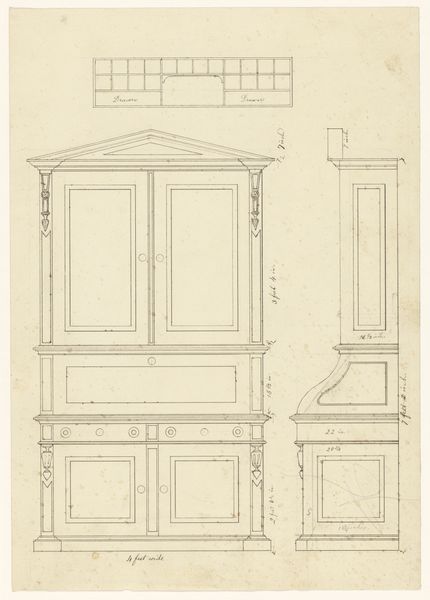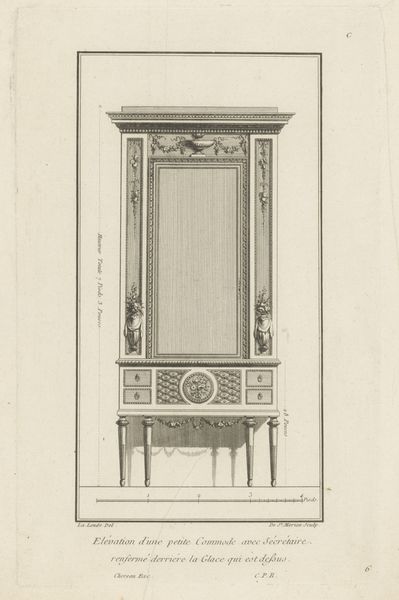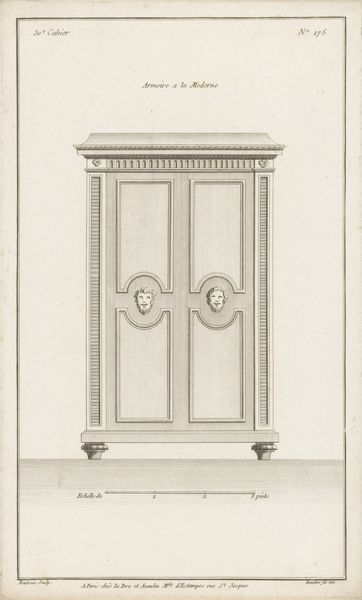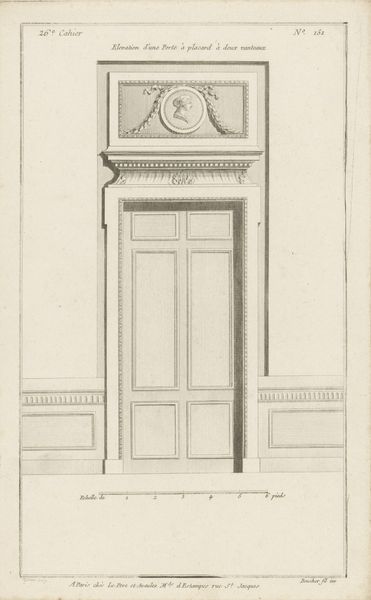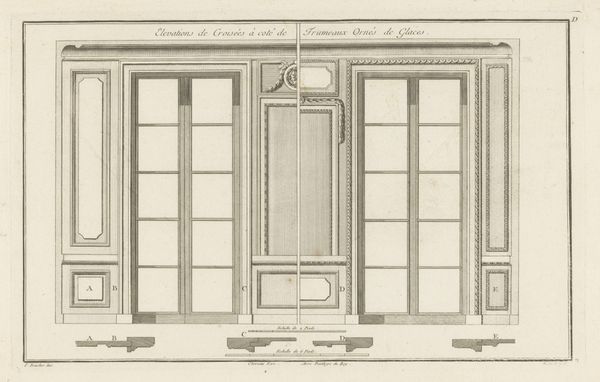
drawing, print, etching, paper, engraving, architecture
#
drawing
#
neoclacissism
# print
#
etching
#
paper
#
form
#
line
#
cityscape
#
engraving
#
architecture
Dimensions: height 360 mm, width 223 mm
Copyright: Rijks Museum: Open Domain
Editor: Here we have *Poort met balkon*, or "Door with Balcony," an etching and engraving on paper made sometime between 1752 and 1794, currently held in the Rijksmuseum. The composition seems very formal and architectural; it feels almost like a blueprint. What do you see in this piece? Curator: It's tempting to view this as simply a technical drawing, but consider the period. The late 18th century witnessed a surge in Neoclassicism, reflecting a desire to return to the perceived order and rationality of the classical world. Think about what this doorway *represents*: entry, access, but also exclusion. Who gets to pass through this ornate portal, and who is kept outside? The design elements themselves – the symmetry, the geometric forms, the restrained ornamentation – speak to a specific socio-political ideology. How might we connect this architectural aesthetic with the burgeoning bourgeois class solidifying its power during this time? Editor: So, the very structure of the door embodies a social statement? The clean lines and almost imposing design reflecting power and privilege? Curator: Precisely. And consider the context in which this print would have been viewed. Was it meant to inspire grand architectural projects? Or to simply represent such aspirational ideals in a period defined by great class disparities? Who would have purchased or consumed it, and what kind of narrative of cultural gatekeeping does this suggest? Even the depiction of something as seemingly simple as a doorway is infused with meaning and can serve as a visual metaphor of social class during this transformative period. Editor: I never would have considered all of that by just looking at it initially! It makes me consider who designed, who benefitted, and who might have been excluded by the architectural forms themselves. Thank you for bringing that up. Curator: The pleasure is all mine. It highlights how the aesthetic choices within architectural and artistic depictions frequently echo broader social power structures. And I look forward to discovering what else is in store.
Comments
No comments
Be the first to comment and join the conversation on the ultimate creative platform.
